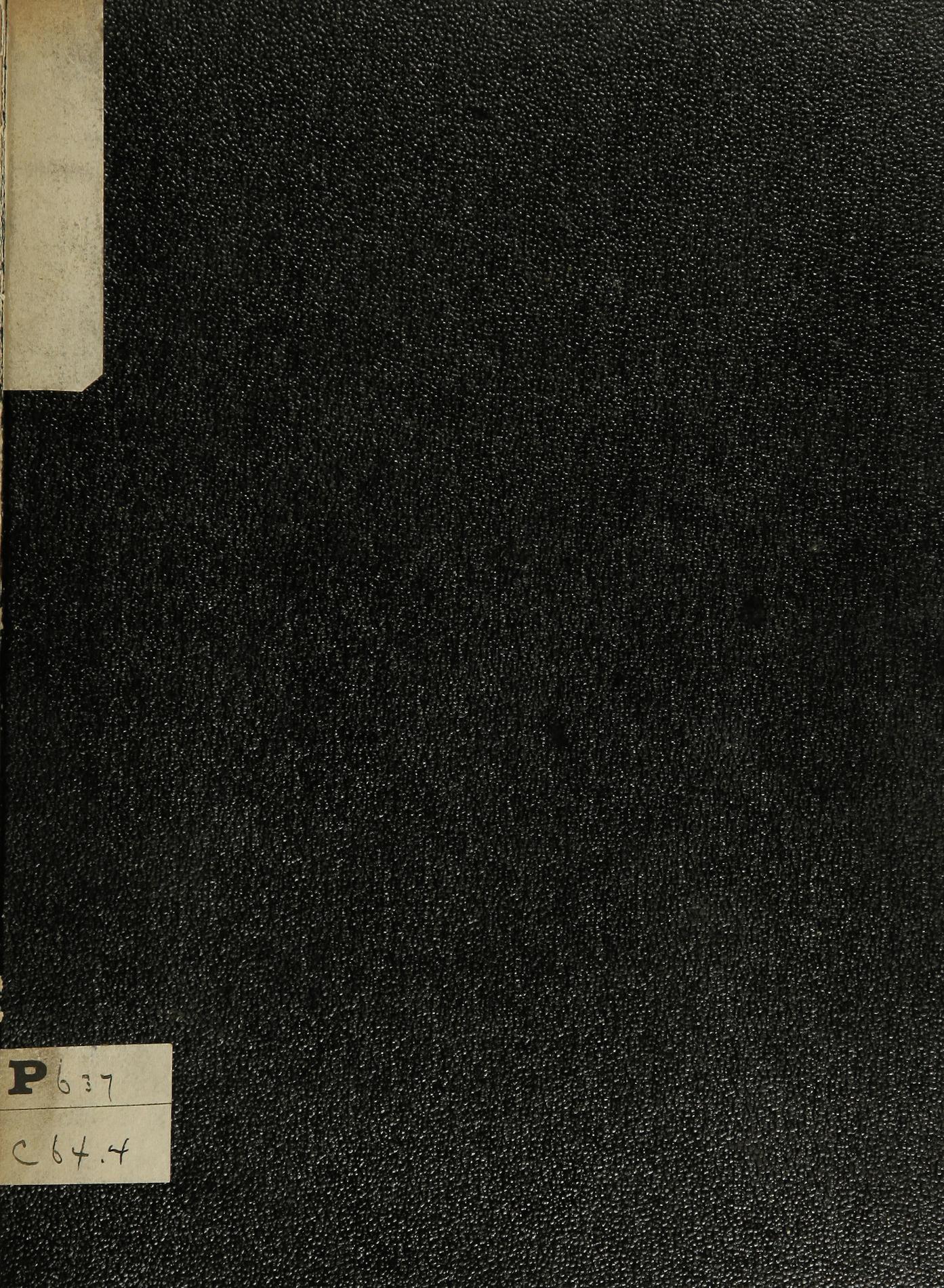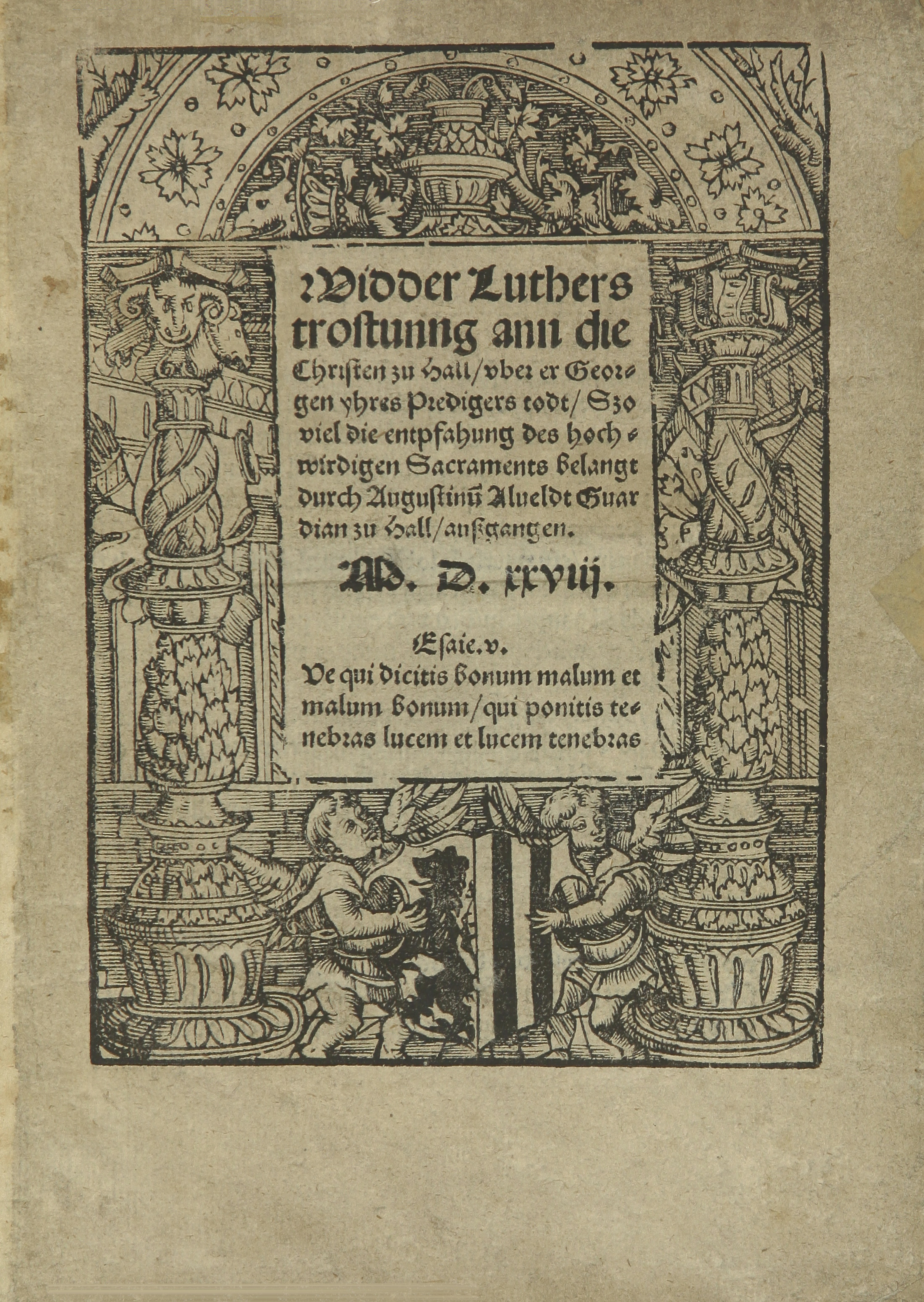Search
-
 Text
TextAn extract of the Christian's pattern, or, A treatise of the imitation of Christ
Thomas, à Kempis, 1380-1471Summary: An abridged translation of the Imitatio Christi, originally published by Wesley in 1735. -
![Summary: This book, which contains a dedication to Joannes Luyken de Jonge, the grandson of the author [in the form of a poem], contains 47 prints by Jan Luyken. Of the 47 prints, 46 are new; amongst these are 4 prints started by Luyken and finished by P. Sluiter (engravings for pages 77, 81, 85, and 87), who also made the title page. According to the final words of the printed title, this work was published after the death of the author. Probably is this his last work and because of illness, Luyken was prevented to finish the work completely. The prints were original engraved in sets of twelve on one copper plate (3 rows of 4 images) and are accompanied on the top by a short title and a two-line poem, on the bottom by a six-line poem, all in book print. The book also contains 4 engravings by P. Sluiter, using drawings by Jan Luyken [Pages 73, 79, 83, 101]. Cf. van Eegen, Vol. 2, Pages 730-734].](https://s3.us-west-2.amazonaws.com/omekacloud-main/asset/60ed3a4ecd76b7317c2654d2bb3959e2718781c1.jpg) Text
TextDes menschen begin, midden en einde : vertoonende het kinderlyk bedryf en aanwasch in eenenvyftig konstige figuuren, met goddelyke spreuken en stichtelyke verzen
Luiken, Jan, 1649-1712Summary: This book, which contains a dedication to Joannes Luyken de Jonge, the grandson of the author [in the form of a poem], contains 47 prints by Jan Luyken. Of the 47 prints, 46 are new; amongst these are 4 prints started by Luyken and finished by P. Sluiter (engravings for pages 77, 81, 85, and 87), who also made the title page. According to the final words of the printed title, this work was published after the death of the author. Probably is this his last work and because of illness, Luyken was prevented to finish the work completely. -
 Text
TextAccount of Armenians at Constantinople
Goodell, William, 1792-1867Summary: A missionary report detailing work with the Armenian population in Constantinople (Istanbul) in Turkey. -
 Text
TextA few remarks on the letter of Henry Woods Esq. : one of his Majesty's coroners for the county of surrey, and some additional facts relative to the inquest at East Horsley
Perceval, A. P (Arthur Philip), 1799-1853Summary: A response to a published letter by Henry Woods against Rev. A. P. Perceval for his refusal to perform the burial rights for a man who committed suicide. -
 Text
TextA clergyman's defence of himself : for refusing to use the office for the burial of the dead over one who destroyed himself, notwithstanding the coroner's verdict of mental derangement ...
Perceval, A. P (Arthur Philip), 1799-1853Summary: A record of the defense given by Rev. A. P. Perceval of the Church of England who refused to give funeral rights for a man who had committed suicide. -
 Text
TextRules to the ministers of every parish within my diocese ...
Church of England. Diocese of Gloucester. Bishop (1735-1752 : Benson)Summary: A pastoral charge from the Bishop in charge of the Diocese of Gloucester outlining the rules and regulations to which all clergymen in the diocese will be held. -
 Text
TextFrüntlich verglimpfung vnd ableynung über die predig des treffenliche[n] Martini Luthers wider die Schwermer : zuo Wittemberg gethon vnnd beschriben zuo schirm des wäsenlichen lychnams vn[d] bluts Christi im Sacrame[n]t
Zwingli, Ulrich, 1484-1531Summary: In a sermon against religious fanatics (Wider die Schwärmer), Luther had asserted the real presence of Christ in the eucharist. Zwingli responds by affirming the Reformed position that the practice of communion is to be seen as a symbolic act. -
 Text
TextAn Address : delivered at the consecration of the Rutland Rural Cemetery, October 7, 1842
Clark, JosiahSummary: A speech delivered on the occasion of the consecration of the cemetery in Rutland, Massachusetts. -
 Text
TextChristliche güthertzige Ermanung, das Man in dem Christlichen, Catholischen, waren, alten, allain seligmachenden Glauben beharren vnd bestendig bleiben solle : In wölcher erstlich auszfürlich angezaiget wirdt, wie das die Zal der Ausserwölten weder geringert noch gemehrt werde: letstlich, wie in der Zal der Ausserwölten ein einfeltiger bleiben, vnd selig werden, müge
Neser, AugustinusSummary: Augustinus Neser was a pastor in Ingolstadt. In this hortatory tract he discusses the importance of staying within the Catholic fold. -
 Text
TextDisputatio. Secundum, & Octauum Decalogi praecepta, thesibus theologicis explicata, : quae publicè ad disputandum proponentur, pridiè idus Septemb. Quando reuerentia, dignitate, & eruditione praestanti uiro, D. Ioanni Schauppio Eckio, liberalium disciplinarum magistro, et ss. theologiae Licentiato, Officiali Passauiensi, etc. Supremus in professione theologica gradus decernetur.
Theander, Georg, 1508-1570Summary: An academic disputation presented Georg Theander, professor at the University of Ingolstadt, and defended by Sebastian Haydlauff, priest at the church of St. Moritz in Ingolstadt. The disputation was based on 30 theses on the 2nd and 8th commandments. -
 Text
TextOratio
Eck, Johann, 1486-1543Summary: This is the first printing of Eck's speech to the Diet of Regensburg on April 5, 1541, defining the Catholic understanding of the Lord's Supper. The Diet of Regensburg proved to be Eck's last appearance as a major theological political leader, for his health declined and he could no longer bear the weight of these grueling encounters. -
 Text
TextEpistolae duae
Haner, Johannes, active 1524-1544Summary: This pamphlet contains two letters on Lutheranism by converts to Catholicism. Witzel's publication of Haner's letter led to the latter's expulsion from the city of Nuremberg. -
 Text
TextDialogus ad Martinu[m] Lutherum : pro responsione ad impertinentem quanda[m] ipsius epistolam super posita[m] veluti collocutoris vice intermixtam
Dungersheim, Hieronymus, 1465-1540Summary: H. Dungersheim had exchanged several letters with Luther before he wrote this dialogue. It was his first formal controversialist tract, written in 1520, but not published until 1531. Luther burned a manuscript copy of this work when he burned the bull Exsurge Domine on December 10, 1520. -
 Text
TextMultiloquus de co[n]citata ex dictis Lutheri seditio[n]e, : ad Inuictissimu[m] & optimu[m] Imperatore[m] ac multo[rum] regno[rum] Rege[m] inclitu[m] etc[etera]. Carolu[m] S.
Dungersheim, Hieronymus, 1465-1540Summary: H. Dungersheim had had a long academic career before the Reformation started. He proved to be a determined foe of Luther. In this rare book he presents "over a hundred" citations from Luther's books written before the Peasants' War (1525) to prove that Luther was a teacher of sedition and tumult. -
 Text
TextGegen die bekanntnus Martini Luthers auff den yetzigen angestellten Reychsstag zuo Augsburg, auff neuwe eingelegt in sibenzehe[n] Artickel verfasst. Kurtze vn[d] Christenlich vnderricht
Wimpina, Konrad, 1460-1531Summary: This pamphlet contains the Catholic response to the first, unauthorized edition of the Schwabach Articles, published in Coburg in 1530. Among the authors of this tract, Konrad Wimpina and Johannes Mensing helped draft the Catholic Confutation of the Augsburg Confession. -
 Text
TextAntwort auff Luthers Sendtbrieff, geschribenn gen Augspurg, an den Cardinal, Ertzbischoffen zuo Mentz Churfürsten [et]c.
Bachman, Paul, 1465-1538Summary: Polemical response, by Paul Bachmann, Abbot of Altenzelle, and an early opponent of Luther, to Luther's letter of 1530 to Albert, Archbishop of Mainz. Albert was inclined towards a peaceful solution to the issues of the Reformation. -
 Text
TextEin schöner spruch darinn deren von Costantz seltzame Renckh und Abentheür, damit Sy vmbgon begriffen syen.
Treger, Konrad, approximately 1480-1542Summary: Anti-Reformation poem directed at the city of Konstanz. Tregor, an Augustinian Prior, was a leading defender of Catholicism in Switzerland. -
 Text
TextEin Sentbreiue an ein frum Eidgnossschafft : betreffendt die ketzerische Disputation Frantz Kolben des aussgeloffen Münchs, vnnd B. Hallers des verlognen Predicanten zu[o] Bern; Ein annderer brieue an Vlrich Zwingli; Der drit brieue an Cunrat Rotenacker zu Vlm; Soli Deo gloria.
Eck, Johann, 1486-1543Summary: First edition of three public letters by Johann Eck. The letters refer to an invitation sent to Eck by Zwingli, Haller and Kolbe, all of them evangelical preachers, to participate in a religious disputation scheduled to take place in Bern. The first letter, addressed to the confederation, explains courteously enough that he, Eck, does not intend to follow the call of the three proven heretics individually, a call not issued by the civic authorities. Not that he is afraid of their arguments; but he insists on an authoritative invitation and presence. -
 Text
TextSieben Kopffe Martin Luthers, von acht hohen sachen des Christlichen glaubens
Cochlaeus, Johannes, 1479-1552Summary: This volume consists of translations from J. Cochaeus' Latin work "Septiceps Lutherus. It is cast in dialogue form and discusses eight topics of religion, showing how Luther had departed from Catholic truth in these areas. The title page woodcut was a classic piece of Catholic propaganda, portraying Luther not only as a Doctor and Churchman, but as a Turk, a wild enthusiast (Schwarmer) and "Barrabas." -
 Text
TextSepticeps Lutherus : ubiq[ue] sibi, suis scriptis, co[n]trari[us], in visitatione[m] Saxonica[m]
Cochlaeus, Johannes, 1479-1552Summary: J. Cochaeus here portrays Luther as a seven headed monster like Cerebrus who guarded the gate to hell in Greek/Latin mythology. The picture on the title page is one of the most famous images to emerge from the anti-Luther polemics of the period. Each head has a caption and is explained in detail in the text. Doctor (of false doctrine), Martinus (faithless, unlike the saint whose name he bore) Lutherus (untrue to his Catholic family tradition)Ưetc. -
 Text
TextWidder Luthers trostung ann die Christen zu Hall : vber er Georgen yhres Predigers todt, szo viel die entpfahung des hochwirdigen Sacraments belangt
Alveldt, Augustin von, active 16th centurySummary: Luther's Consolation to the Protestants of Halle, published in 1527, provoked this reply from Agustin von Alveld, garuden of the Franciscan Monastery in Halle from 1524-29. Alveld condemns Luther's tract as "Hussisch," in particular with respect to his teachings on the sacrament. Alveld dedicated the work to Albert of Brandenburg, Archbishop of Mainz.